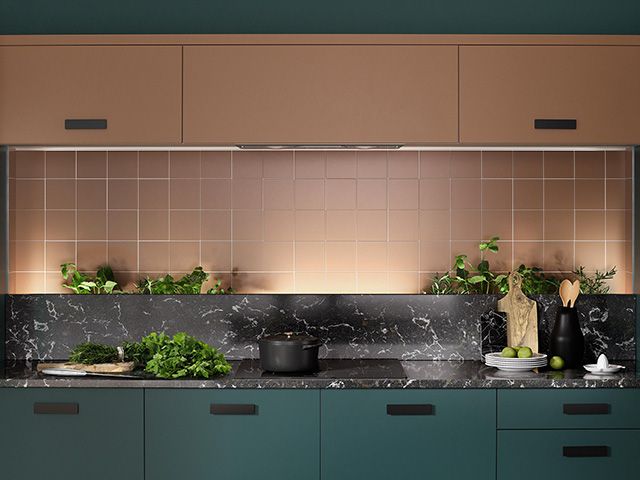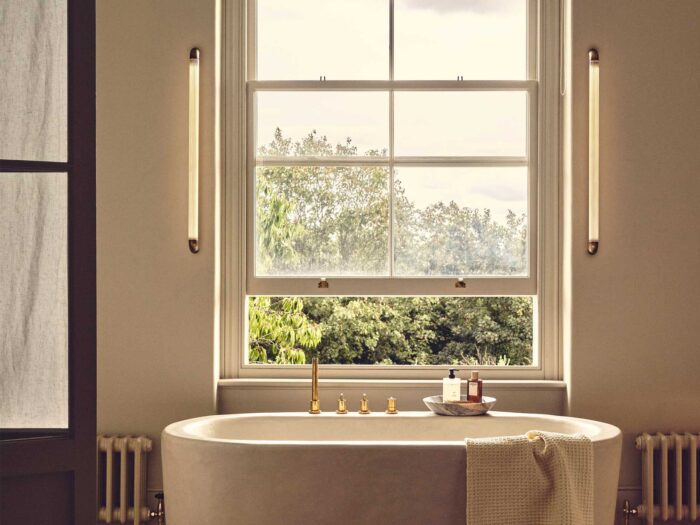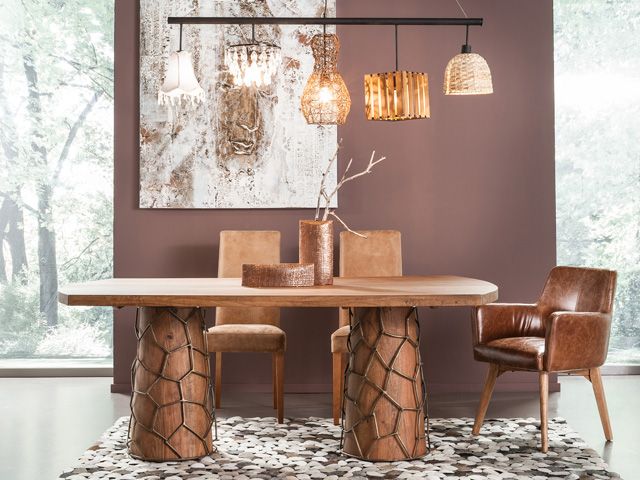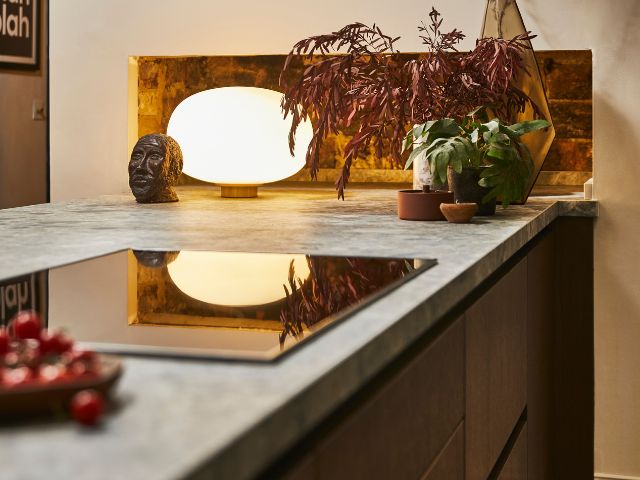
Image Credit: Furniture & Choice
Lighting tips – the 14 mistakes we’re all making
When it comes to the interior design of our homes there are certain things we put high up on the list of priorities. But while the colour scheme, furniture and floor plans are all vital components of home décor, there’s another, often overlooked aspect that is equally as important to consider – the lighting.
Believe it or not, the way we light up a room is just as vital as the wallpaper patterns we choose or the layout of the room itself. Maybe even more.
Expertly chosen and placed lighting can affect the whole mood, energy, and atmosphere of a room. The problem is lighting can be tricky to get right when it comes to design.
From only using one light source to forgetting to implement a lighting scheme into a design, and getting overwhelmed by the sheer choice available, there are many mistakes we’re all making when it comes to lighting in our homes.
We spoke to the interior experts for their top lighting tips – and how to put any mistakes right.

1. Over-reliance on a single light source
In open-plan spaces like kitchen, living or dining areas, it is easy to rely solely on overhead spotlights (task lighting).
But ensuring you have a mix of lighting in a room is key, as this will help to bring the room to life.
Lucy Henderson, head of design at My Bespoke Room advises thinking about layering your lighting to include a range of task lighting, accent and overhead lights to help the room work for different purposes.
“Use directed task lights for kitchen work surfaces, decorative pendant lights above the island and dining table, and cosy lamps in the lounge area,” she explains. “This way, you can create a warm, inviting atmosphere when the spotlights are off in the evening.”
When it comes to how many light sources to include in your space, it does depend on the size of your room.
“On average, we recommend a living room to have two to three lamps scattered around the room, but no more than four,” Ally Dowsing, founder and lighting expert at Dowsing & Reynolds suggests.
“For example, a lighting scheme with a ceiling light, wall lights and a floor light is a great formula for a well-lit room that can be easily transitioned down for the evening.”

2. Overlooking dimmer systems
Many modern light fittings are compatible with dimmer switches, which can make a big difference in setting the right mood.
“Installing dimmers lets you easily adjust your lighting to suit different times of day and activities, giving you full control over the ambience,” Lucy advises.

3. Sticking to basic bedside lighting
While table lamps on either side of the bed are a classic choice, Lucy suggests adding wall lights or pendants for a more luxurious, hotel-like feel.
“Not only do they elevate the room’s look, but they also free up space on your bedside tables,” she explains.
4. Letting electricians dictate lighting styles
It’s easy to let your electrician or builder make lighting decisions, but Lucy says this can often result in too many recessed spotlights.
“Instead, consider consulting a lighting or interior designer who can help you layer lighting to create a beautifully lit home,” she adds.

5. Limiting lighting variety in bathrooms
Spotlights are great for task lighting in bathrooms, but they don’t have to be the only design choices for this space.
“Why not add a touch of warmth with IP-rated wall or pendant lights near the vanity?” suggests Lucy. “You could also incorporate LED tape lights under a wall-hung vanity or behind a freestanding bath to create a soft, cosy glow when you’re relaxing in the tub.”

6. Not considering ceiling height for pendant lights
When choosing feature pendant lights, it is important to check the drop or height of the fitting, especially if you have standard ceiling heights.
“This way, you can avoid lights hanging too low and keep everyone comfortable and bump-free,” Lucy adds.
7. Forgetting to work with natural light
When it comes to selecting the number and strength of artificial light sources in your space, Ally says considering how much natural light the space gets is key – especially if you’re designing an outdoor living space such as a garden room.
“Monitor the space to assess whether your room is north, south, west or east facing as this will help to highlight how much artificial light is needed for the room,” she advises.
“Similarly, take note of the size of windows or skylights you have, if you have a light and airy space, you might find you don’t need your lighting scheme to be as bright.”
If you find your kitchen or garden room has lots of bright light, Ally suggests using task lighting, such as pendant lights, to illuminate the space for activities such as reading or cooking.

8. Choosing inappropriate lighting for the space
Often in our home design, we tend to choose lighting without thinking about what’s needed or what will be most functional. Therefore making sure to choose the most appropriate lighting for each room is key.
“While in the bedroom you may want to opt for a warm light to create a soothing atmosphere, but areas such as the kitchen counter will require task lighting,” Ally explains. “Choose spotlights to ensure there is enough light for cooking.”
This also goes for outdoor lighting.
“Make sure there are convenient path lights and porch lights between your home and garden room, to help you in and out safely in the evening,” Ally adds.

9. Forgetting to think about lighting before you decorate
One mistake commonly made is forgetting to plan your lighting scheme before you renovate or decorate.
“To do this, think about how you want to use the space, mapping out where key pieces of furniture will be placed such as side tables and coffee tables,” Ally advises. “While this does require extra time and planning, this will help to ensure you have the right switches, wiring and light fixtures in the right places.
“Planning will help you create a layered lighting effect,” Ally adds.
10. Not thinking of lighting like the sun
When incorporating lighting into your décor scheme it is important to work with natural light rather than against it.
Ally recommends trying to imitate the natural cycle of the sun with your lighting choices, with the aim of your scheme having enough layers that it can become softer and lower by night – just like the sunset.
“Use larger floor lamps and a smaller table or a bedside lamp to complement ceiling lights, to help transition your space throughout the day,” she adds.

11. Ignoring light and paint pairings
Just like natural light can affect the shade of your painted walls, so can artificial light sources.
“Standard soft white incandescent or LED light bulbs provide warm natural lighting which can make bright shades of paint, such as red and orange, appear slightly more intense,” Ally says. “If this is the case, consider opting for this pairing in a dining room or snug for added cosiness in the evening.”
Ally says standard LED light bulbs can make cooler tones such as blue, green and grey appear a little duller so opting for a slightly more vibrant shade in this colour palette will help to complement it against the light.
“White bulbs offer a light source similar to daylight, helping you go as pale or as bright as you want with your paint shades, without affecting the colours too much,” she adds.
“If you’re unsure which shade will work, test it out in your room by painting the shade on a piece of paper and stick onto the wall, behind the light source to see how it looks.”
12. Forgetting to consider colour temperature
Whichever light bulbs you choose for your home, it’s important to make sure they have a similar colour temperature.
“Colour temperature is a way of measuring different shades of light, based on how ‘warm’ or ‘cool’ it is,” Ally explains.
“All lights in your home should have a similar temperature to avoid clashing. Opting for incandescent bulbs with a colour temperature between 2,700 and 3,000 kelvins is recommended.”

13. Not using lighting as a design feature
While lighting is a functional part of a room, it can double up as a design feature too, helping to enhance the layout and look of your space.
“In recent months, we’ve seen an increase in popularity for interiors with a curvaceous silhouette, with mushroom lamps and scalloped edges becoming more popular,” Ally explains.
“While tapping into trends is not for everyone, we love how these curved lamps play with shape, adding interest and creativity into your home.”
Ally suggests placing arched table lamps on your bookshelf or coffee table and pairing them with minimalist furniture to let the lamp stand out as a design feature.

14. Overlooking potential focal points
There are some areas of your home where natural light just can’t reach. But that doesn’t mean you can’t make it stand out.
Ally advises: “There are so many nooks in our home that could be brought to life with light. For example, a coffee station, kitchen shelves to a bookshelf.
“To add character to these nooks in your home, consider adding pendant lights, wall sconces or picture lights to add warmth to the space. Pair with leaning art on your shelves and illuminate these with under-cabinet lighting to make the corner stand out even more.”




